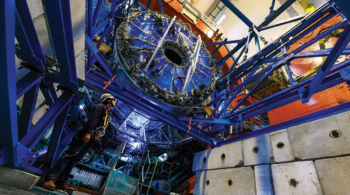 Read article 'Pulling the trigger on LHC electronics'
Read article 'Pulling the trigger on LHC electronics'
Pulling the trigger on LHC electronics
The conditions at CERN's Large Hadron Collider pose severe challenges for the designers and builders of front-end, trigger and data acquisition electronics. A recent workshop reviewed the encouraging...











